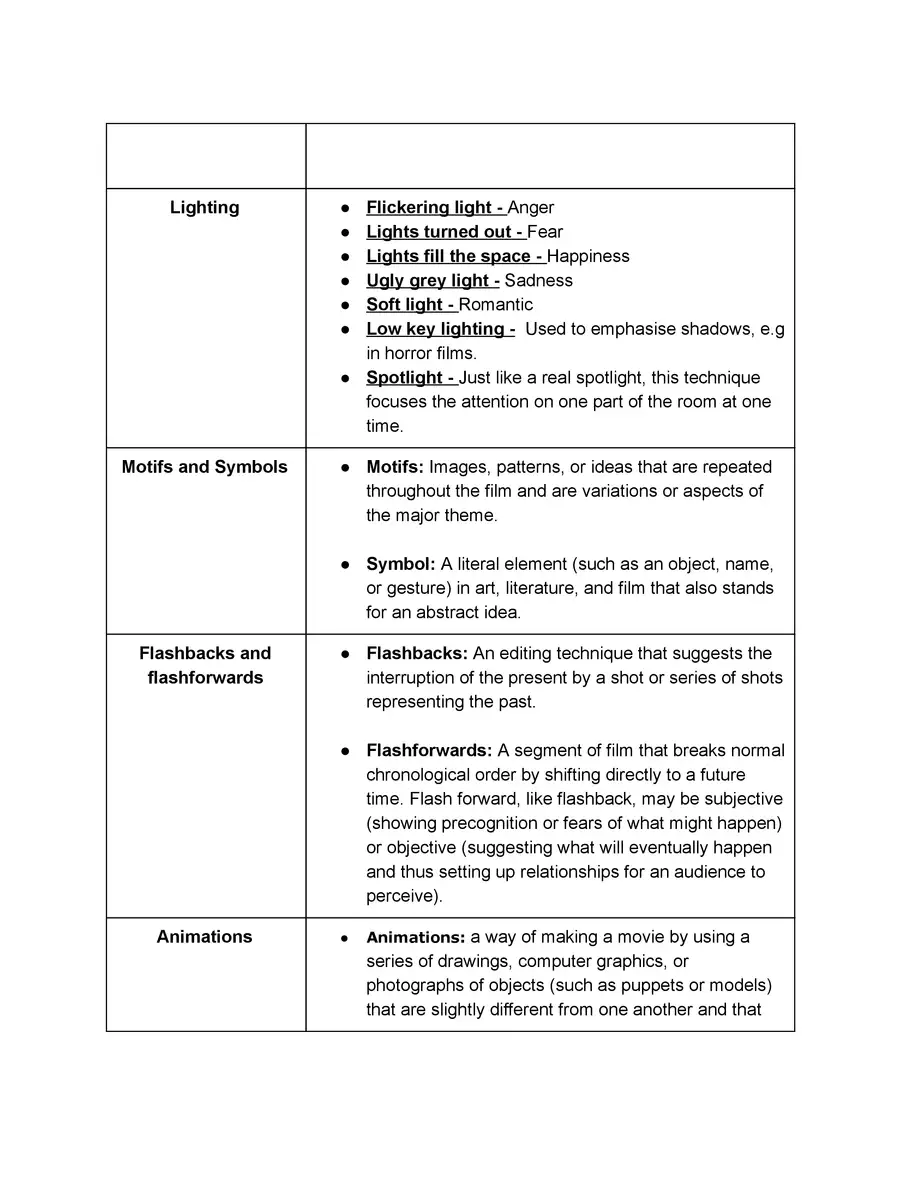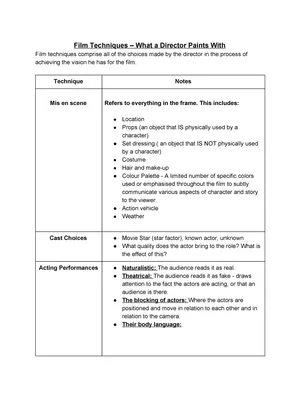Film Techniques
The numerous strategies and equipment that filmmakers employ to share their aesthetic and narrative vision with the audience are referred to as film techniques. These methods cover a wide variety of visual and aural components that enhance a movie’s overall effect.
So, to put it simply, cinema methods are ways that the film conveys pictures to the audience in an effort to alter their impression of them. Several various types of cinema techniques exist, such as what the camera captures, how lighting is employed in a scene, and how the movie is edited.
List of Film Techniques
| Technique | Description |
|---|---|
| Cinematography | |
| Camera Angle | The angle from which the camera views the subject (e.g., high angle, low angle, eye level). |
| Camera Movement | Techniques like panning, tilting, tracking, and zooming to create different effects. |
| Framing and Composition | Arrangement of elements within the frame (e.g., rule of thirds, leading lines, symmetry). |
| Depth of Field | Control of focus in the frame (shallow for blur, deep for clarity). |
| Lighting | |
| High Key Lighting | Bright, even lighting with reduced shadows for a positive mood. |
| Low Key Lighting | Strong contrasts between light and dark for a dramatic atmosphere. |
| Natural Lighting | Use of available light sources, like sunlight, for authenticity. |
| Color Temperature | Warmth or coolness of lighting measured in Kelvins, affecting mood. |
| Editing | |
| Cutting | Selection and arrangement of shots to influence pacing and tension. |
| Montage | A rapid sequence of shots to convey information, emotions, or time passage. |
| Transitions | Techniques like fades, dissolves, wipes, and cuts for scene changes. |
| Continuity Editing | Maintaining consistency in details for a coherent narrative. |
| Sound | |
| Diegetic Sound | Sounds originating from within the film’s world (e.g., dialogue, footsteps). |
| Non-Diegetic Sound | Sounds from outside the film’s world (e.g., music, voice-over). |
| Sound Design | Creation and manipulation of sounds to enhance atmosphere and storytelling. |
| Soundtrack | Music is used in the film to evoke emotion and complement scenes. |
| Special Effects | |
| Practical Effects | Physical effects are created on the set, like explosions or animatronics. |
| Visual Effects (VFX) | Digital effects added in post-production, including CGI. |
| Miniatures and Models | Use of scaled-down replicas for impractical or dangerous scenes. |
| Color Grading | |
| Color Adjustment | Post-production adjustment of colors and tones for mood and style. |
| Production Design | |
| Set Design | Creating the look and feel of sets, locations, and props. |
| Costume Design | |
| Costume Selection | Choice of clothing to reveal character traits, social status, etc. |
| Makeup and Hairstyling | |
| Makeup Application | Enhancing actors’ appearance to match characters (aging makeup, special effects). |
| Hairstyling | Creating hairstyles that fit characters and time periods. |
| Storyboarding | |
| Visual Planning | Creating visual representations (drawings or digital images) to plan shots and sequences. |
You can download the List of Film Techniques PDF using the link given below.


